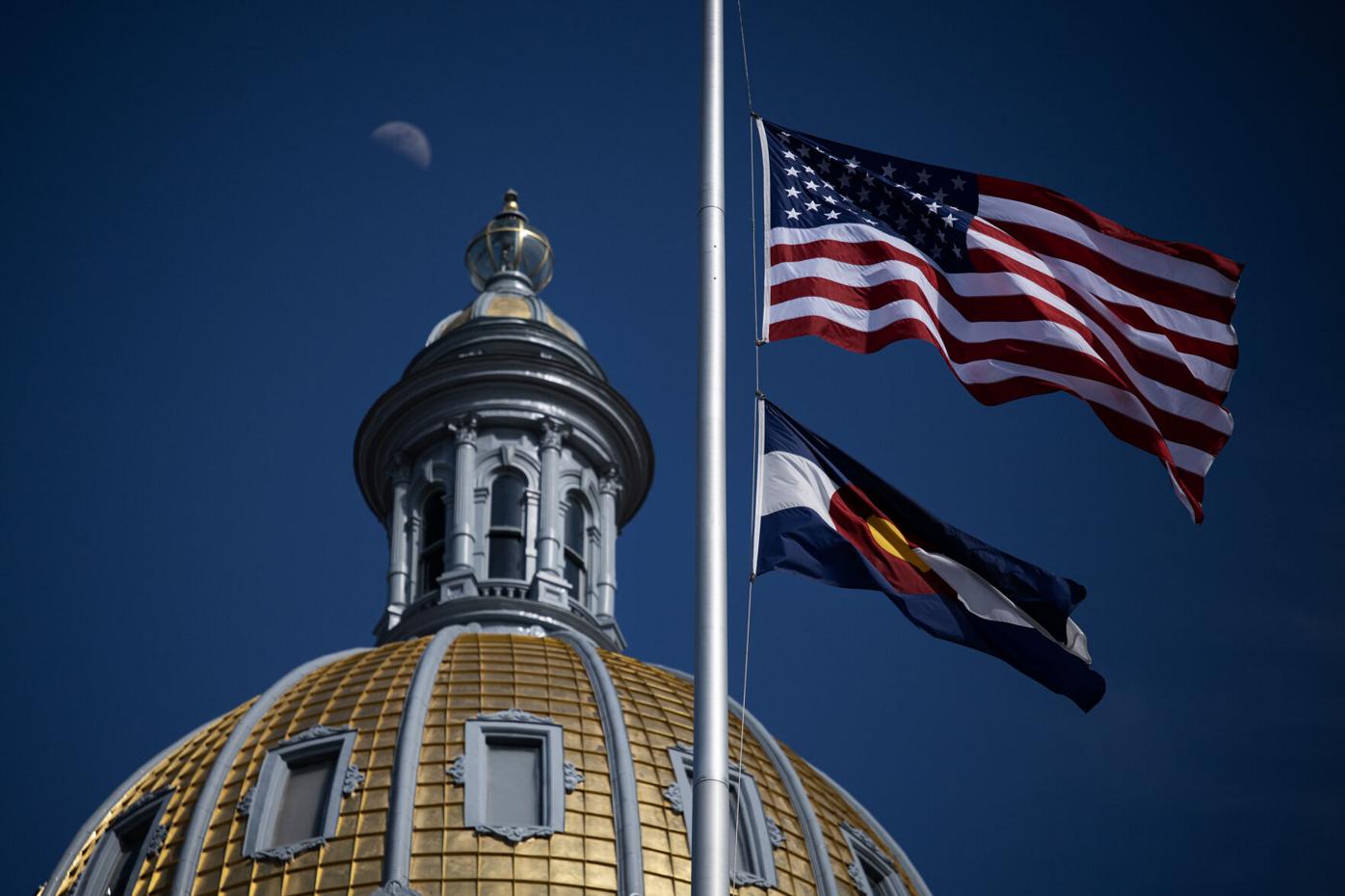5 risks to Colorado’s economy state officials are watching

FILE PHOTO: The Colorado State Capitol building in Denver Colo. Gov. Jared Polis's Office of State Planning and Budget released a quarterly economic forecasting reporting in March detailing a rosier picture for Colorado's economy and what global and national risks could have local effects.
Timothy Hurst/Denver Gazette
Fears of a recession are fading as the nation’s — and Colorado’s — economy continue to beat expectations.
Looking forward into 2024, Colorado’s Office of State Planning and Budget (OSPB) forecasts national economic growth to be better than originally thought based on strong consumer spending at the end of 2023.
The economy is expected to make a “soft landing” and the risk of a recession within a year is at 30%, the governor’s budget office said in its quarterly economic forecast released Friday, which is used by lawmakers to set the state’s spending plan.
But Colorado’s economy isn’t completely out of the woods, according to the governor’s office.
And some industries could feel like they’re in a recession while the rest of the economy continues to grow, said OSPB Deputy Director Bryce Cooke.
“Colorado continues to lead the nation with strong economic growth and unemployment below the national average,” Gov. Jared Polis said in a statement. “Our focus on continuing to strengthen our workforce and saving Coloradans money on housing, education, healthcare, and more will drive an even more dynamic economy while protecting our reserves and the financial strength of the state.”
While the governor’s office is optimistic, the combination of several risks could put the nation and Colorado into a recession. Here’s what trends state leaders are watching.
1. A retail slowdown Colorado is already feeling
People are continuing to spend money despite high inflation, but that’s not expected to last.
Holiday spending surprised economists and the nation saw strong gross domestic product growth in the last quarter of 2023, leading Polis’ office to forecast a rosier year. But because of slowing income growth and low consumer confidence, there’s not much more room for consumer spending to keep rising.
And Colorado is already showing that, according to the forecast.
Colorado has seen a slowdown in retail over several months and the nation is expected to follow. The state’s retail spending declined 1.4% in 2023 while the nation saw 3.5% growth. Part of it is due to unusually high growth of 11% to 17% during the pandemic that’s been difficult to keep up with.
There is some good news though: Colorado retail is expected to bounce back sooner.
As the nation could see a retail slowdown this year, Colorado’s may start rebounding this year and is set to outpace the nation by 2025, according to the governor’s office.
2. High housing costs
Homeownership is out of reach for many people as prices climb and inventory hasn’t caught up to demand.
Disparities in homeownership continue to grow as policies designed during the pandemic to increase housing in the state haven’t been as effective due to rising interest rates hurting construction, the governor’s office said.
The rising costs are making it harder for people to build equity through homeownership, especially those from marginalized communities. Black and Hispanic residents — 37% and 58% which own a home, respectively — have lower homeownership than white households (72%).
The average household in Denver needs to make $71,000 more than in 2020 to afford a home, according to real estate firm Zillow, as housing prices have outpaces income growth.
Rising housing costs have also contributed to Colorado’s retail slowdown, according to the report. Other states with rising housing costs like Florida and Texas are seeing similar trends in their retail industry as people with higher mortgages or rents have more pressure on their budgets.
Cooling labor market
The labor market has stayed resilient, but it’s showing signs of cooling.
In a good economy, the number of workers quitting their job is typically higher than those laid off. During a recession, it reverses.
In Colorado and the U.S., quits have outpaced layoffs since the start of 2021 but the gap is starting to shrink. And Colorado’s gap is smaller than the national average.
While no recession is expected, the governor’s office said it may feel like one for workers in the manufacturing, information and financial sectors.
4. Global conflicts could escalate
Colorado’s forecasting takes into account major global events that could have ramifications on the state’s economy.
Escalation in geopolitical conflicts such as Russia’s war on Ukraine and the Israel-Hamas War could cause shocks that ripple into a recession.
The governor’s office is also aware of supply chain disruptions from Houthi rebels in Yemen attacking cargo ships in the Red Sea to pressure Israel to stop its war in Gaza. The attacks are pushing shipping traffic to go around Africa instead of through the Suez Canal, causing delays and potentially driving prices up when consumers are still reeling from high inflation.
But despite months of attacks, the forecasting report said oil prices have stayed relatively stable. Gasoline prices have been below average but are expected to go up in the warmer months due to higher demand. But escalation of these geopolitical conflicts could further raise gas prices across the world and in Colorado.
5. Rising debt
Debt is growing across America and it’s concerning economists.
Household debt rose $212 billion in the fourth quarter in 2023 to a total of $17.5 trillion, according to New York Federal Reserve’s Quarterly Report on Household Debt and Credit.
Credit card delinquencies have been consistently higher than pre-pandemic normals, the governor’s office said.
Younger and lower-income households are more financially strained, especially those who aren’t homeowners and haven’t been buoyed by the housing market’s pandemic boom.
Student loan payments have also resumed, further impacting consumer spending.




